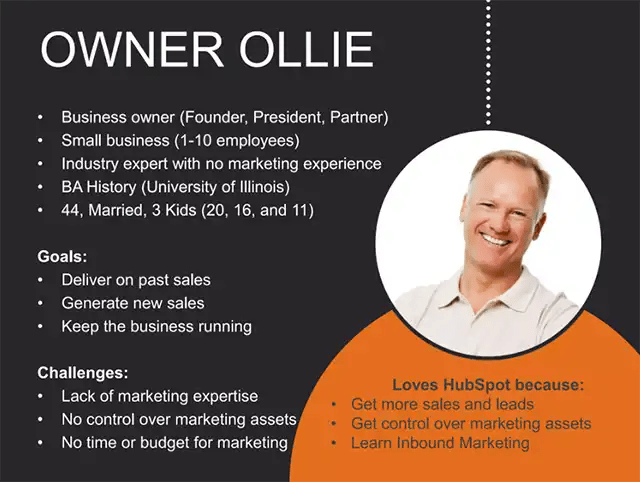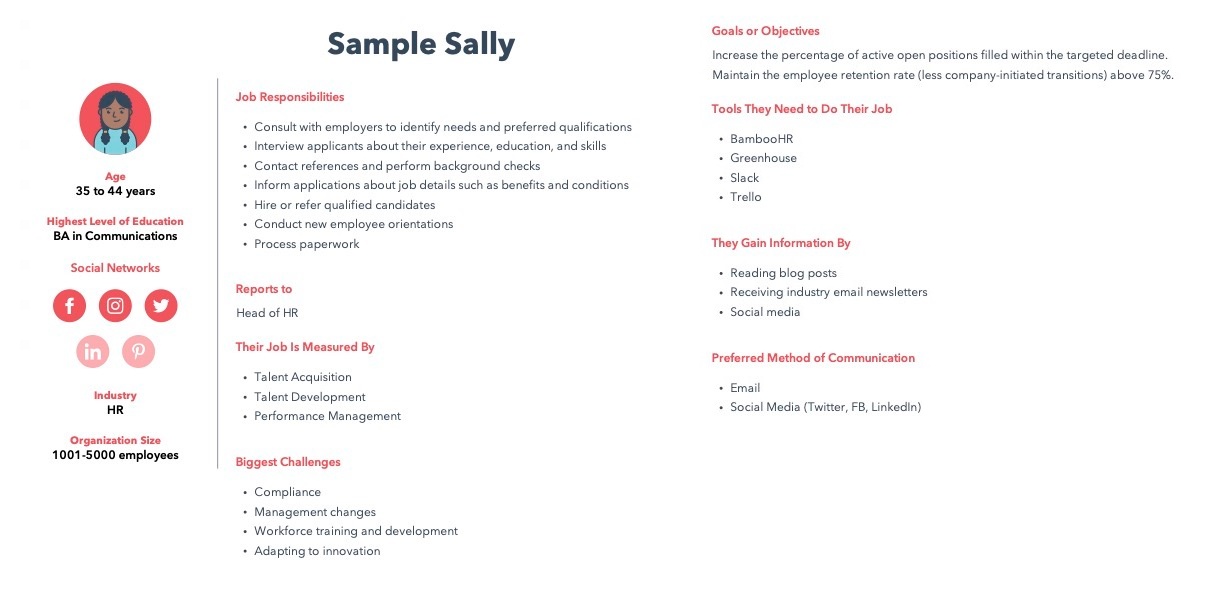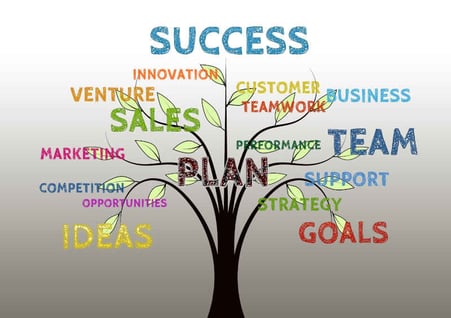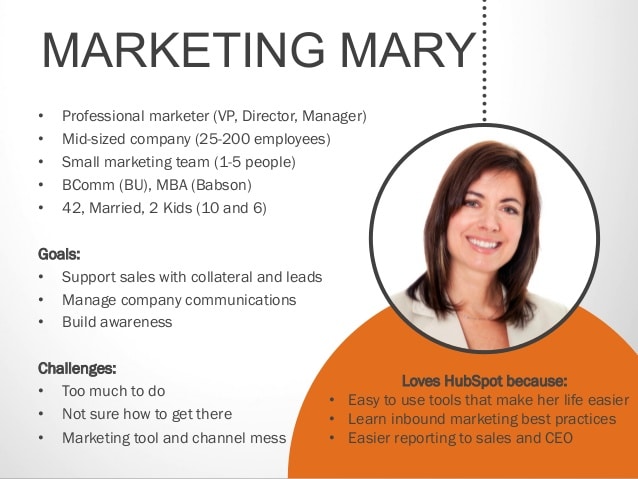GTM Strategy The Ultimate Guide for Growth-Driven Entrepreneurs
- Home
- GTM Strategy The Ultimate Guide for Growth-Driven Entrepreneurs
Go-To-Market Strategy
GTM strategy is a critical element of any business's success. It involves defining, targeting, messaging and optimising campaigns to maximise return on investment. With careful planning and execution, companies can effectively launch products or services into the market with positive results. Having outlined the fundamentals of a successful GTM strategy, let's delve into how to create one that drives growth for your business.
We'll cover critical topics such as identifying target markets, crafting messages that resonate with customers and optimising channels for maximum reach - all while measuring performance along the way. So, join us in exploring how you, too, can create an effective GTM strategy that drives growth for your business.
Table of Contents:
- Introduction
- Examples of successful GTM strategies
- Defining Your GTM Strategy
- Search Engine Optimisation (SEO):
- Channels:
- Optimisation:
- Measuring Performance:
- Identifying Your Target Market
- Crafting Your Messaging
- Developing Your Channels
- Search Engine Optimisation (SEO):
- Optimising Your Campaigns
- Measuring Performance
- Cost Per Acquisition (CPA):
- Customer Lifetime Value (CLV):
- Refining & Iterating
- Conclusion
Introduction
GTM plans are indispensable for initiating a new offering, product or solution. A successful GTM strategy helps you identify your target market and craft messaging that resonates with them.
It also enables you to develop the proper channels for reaching those customers, optimise campaigns for maximum impact, measure performance accurately and refine your approach as needed.
Defining Your GTM Strategy is the first step in creating an effective plan of attack. To position your offering correctly in the marketplace, you must understand what makes it unique from competitors’ products and services.
Consider researching customer needs and preferences to gain insight into how they perceive similar offerings already on the market—this will help inform your positioning statement. Once you have established a clear value proposition, determine which marketing channels will most effectively deliver this message to potential buyers.
 Identifying Your Target Market is critical when crafting an effective GTM strategy; if no one knows about or wants what you’re selling, there won’t be any sales. Start by understanding who would benefit most from using your product or service—are they young professionals? Seniors? Business owners?
Identifying Your Target Market is critical when crafting an effective GTM strategy; if no one knows about or wants what you’re selling, there won’t be any sales. Start by understanding who would benefit most from using your product or service—are they young professionals? Seniors? Business owners?
Knowing who stands to gain from purchasing your offering allows you to tailor messaging accordingly so it speaks directly to their pain points and interests them enough to take action.
Crafting Your Messaging involves creating compelling copy that grabs attention while conveying why people should choose your product over others on the market—in other words, why should they buy now instead of later (or never)? Keep things simple yet persuasive; use language that appeals emotionally rather than logically and focus on benefits rather than features when possible.
Ensure each piece of content answers questions like “What’s in it for me?” “Why should I care?” “How does this make my life easier/better/happier?”
Developing Your Channels means deciding where to reach out with targeted messages: Will email work better than social media ads? Should direct mail pieces go out before the launch of digital campaigns? Evaluate which platforms offer access to desired demographics and trackable analytics so ROI can be monitored throughout each campaign cycle. Also, consider the timing:
When do prospects check emails/social media accounts etc.? Timing plays a huge role in getting eyes on content quickly before interest fades away completely.
Optimising Your Campaigns necessitates consistent testing and refining based on data garnered from prior cycles; A/B testing techniques, such as varying email subject lines & visuals or split-testing different ad copy across multiple platforms, should be employed while tracking conversion rates and other metrics that relate directly to ROI objectives established earlier in the planning process (e.g., boost brand awareness by X%, decrease cost per acquisition by Y%).
These insights empower marketers to fine-tune their approaches more effectively, resulting in higher clickthrough rates and heightened engagement overall—even minor modifications can yield significant results.
Measuring Performance is a must for any successful GTM strategy, as without accurate data, there's no way to gauge if efforts are having the desired effect. Nowadays, there are numerous options for monitoring performance metrics in both digital and physical settings, making it more straightforward to evaluate the effectiveness of strategies implemented.
Many of these provide real-time feedback, allowing marketers to adapt their approach swiftly should changes in consumer behaviour arise. This invaluable data assists decision-makers in determining whether to stay on the same course or take a sharp turn depending on the current situation—knowledge truly is power.
Refining & Iterating involves taking information gathered, measuring performance, analysing results, and implementing adjustments to improve outcomes.
For example, perhaps a particular channel isn't performing well despite optimising efforts and might want to switch to another that produces better results.
Additionally, we may find specific tactics working exceptionally well and could allocate additional resources towards maximising gains made far, potentially reaping the rewards further downline future campaigns.
Creating a successful go-to-market (GTM) strategy is essential to ensuring that resources are utilised effectively and the right message reaches the desired target audience optimally. It helps businesses maximise their resources and reach their desired target audience in the most efficient way possible. The aim of a GTM plan is to ensure that the correct communication gets to the relevant individuals at an opportune moment.

For marketers, developing a successful GTM plan requires careful planning and research into who your ideal customer is and what they need from you.
Knowing your buyer persona will help you create content that resonates with them, helping you stand out from competitors. It would be best to consider how customers prefer to consume information – whether it’s through video, podcasts or blog posts – so you can tailor your approach accordingly.
We can use the buyer persona 'Marketing Mary', often used as an example persona by HubSpot.
When creating a GTM plan for Marketing Mary, it’s essential to understand her specific needs and goals: growing brand awareness, increasing sales, improving customer engagement, and expanding her customer base. To do this effectively, take advantage of multiple channels such as email campaigns, social media advertising, or even influencer marketing, if appropriate for her business sector.
It's also important to consider Mary's budget when devising a GTM strategy; some channels may be more expensive than others but could potentially yield better ROI (return on investment).
For example, investing in paid search ads might bring more immediate leads. At the same time, organic SEO efforts require more patience but can pay off with higher conversion rates due to increased trustworthiness amongst potential customers.
Ultimately, each channel should work together to achieve Mary’s overall objectives. By creating targeted messages tailored specifically for her target market, she can ensure maximum impact across all platforms while still remaining within budget constraints—making sure every penny counts.
This introduction has helped us appreciate the potential of GTM strategies and how they may be advantageous to organisations.
Now, let's look at some examples of successful GTM strategies implemented in the past.
Key Takeaway:
Developing an effective Go-to-Market strategy is essential for any new product launch, requiring research into customer needs and preferences to craft a unique value proposition that resonates with the target market. From there it's all about identifying channels of communication to reach them effectively while optimising campaigns through testing and refining in order to maximise returns on investment.
Examples of successful GTM strategies
Good GTM strategies are essential for any business to achieve growth objectives and overcome barriers. A successful GTM strategy should be customer-centric, offering a clear value proposition that resonates with the target market. It should also include an in-depth analysis of competitors and their offerings and a comprehensive marketing mix tailored to the company’s goals.
Let's use another fictional HubSpot buyer persona, Owner Ollie.

Market segmentation is a must when creating your messaging. Narrow down which segments you're aiming for and customise the messages to fit their needs.
For example, if Owner Ollie wants to target young professionals, he can use phrases such as "Take the Bull by The Horns" or "Start Your Career on The Right Foot". Conversely, if his focus lies on seniors, he could say something like "Put Money Away for A Rainy Day" or "Ensure Financial Stability in Retirement". Keywords: Market Segmentation, Target Market, Messaging, Young Professionals, Seniors
Once you have identified your target market and crafted your messaging, developing channels to reach them effectively is time. Depending on the size of Owner Ollie's budget, several options are available, such as organic search engine optimisation (SEO), paid search engine advertising (SEA), social media campaigns, and email marketing.
Each channel requires careful planning, so it is important to consider all elements before launching any campaign—from budget allocation across channels to specific targeting parameters within each one.
Optimising campaigns is critical for achieving maximum return on investment (ROI). Regularly analyse performance metrics such as click-through rate (CTR) or cost per lead (CPL) and make adjustments accordingly - this could mean adjusting ad copy/creatives or changing targeting settings among other things.
Additionally monitoring competitor activity can provide valuable insights into what works best in terms of messaging, creative execution etc.
Examples of successful GTM strategies can provide a valuable roadmap for companies looking to develop their own approach. Formulating a tailored GTM plan can be advantageous in achieving desired outcomes expediently.
Key Takeaway:Creating a customer-centric, value proposition-driven GTM strategy requires thorough market segmentation and targeted messaging; as well as selecting the right channels to reach customers. To maximise ROI, campaigns should be regularly monitored and optimised by analysing performance metrics such as CTR or CPL, while keeping an eye on competitors' activities.
Defining Your GTM Strategy
Defining Your GTM Strategy is an essential step for Owner Ollie’s business. Having a clear GTM strategy is essential for Owner Ollie's enterprise to ensure that its offerings are correctly positioned in the market, reach the intended demographic, and bring about a positive ROI.
A successful go-to-market strategy should include four key elements: defining your target market, crafting your messaging, developing your channels, and optimising campaigns.
Identifying your target market is essential to developing a successful go-to-market strategy; this includes researching customer needs and wants, as well as understanding what motivates them. This involves researching potential customers' needs and wants so you can tailor messages specifically to them.
Moreover, it's crucial to discern what drives them as shoppers so you can craft material that connects with them on a psychological level. Once you have identified who you want to reach with your product or service, you can start building out buyer personas – detailed profiles of ideal customers – which will help guide all other aspects of the go-to-market plan.

Crafting effective messaging is a must for any successful marketing plan. Research into customer interests and core values that align with those interests should be conducted to ensure the language used resonates with customers. Keeping customer goals in mind while crafting each message for outreach efforts across multiple platforms, including email campaigns and social media posts, will help create an impactful impression of your brand or product offering.
Keywords should be strategically placed throughout these messages to increase visibility and engagement.
Channels
After determining who you're targeting and crafting effective messaging around it, selecting appropriate channels becomes paramount. Channels refer not only to where content will be distributed but also to how people will interact with it - whether they'll read blog articles, watch video tutorials, follow social media accounts etc.
Knowing which channels are most popular among different segments of buyers allows companies like Owner Ollie’s business to develop more targeted strategies designed at engaging potential customers directly instead of relying solely on generic tactics such as broadcast ads.
Optimisation
Optimising campaigns involves testing different approaches before settling on one particular approach. This could involve anything from running split tests on emails sent out or experimenting with new ad formats online.
By tracking performance metrics like open rates, click-through rates, conversion rates etc., companies gain valuable insights into what works best when communicating their message over time - allowing them to make adjustments along the way if needed for improved ROI results going forward.
Measuring Performance
Measuring performance is an ongoing process throughout any go-to-market campaign. Companies need access to data points such as the number of impressions made by ads served up online, the response rate from emails sent out, the number of leads generated by webinars held etc.
Having visibility into these types of numbers provides invaluable information regarding overall success & failures associated with each tactic employed & ultimately informs future decisions related towards improving effectiveness moving forward long-term basis
Refining and iterating based on findings gained during the measuring phase described above help to maximise the ROI achieved via each campaign run by Owner Ollie’s business over time. For example, after collecting data gathered during an initial round of email blasts sent out, refining subject lines used within the next batch sent out increases the likelihood of recipients opening mailers, thereby leading to a higher chance of conversions occurring down the line.
Ultimately, the goal here is to constantly improve upon existing methods in order to maximise returns realised at the end of the day.
Having a clear and well-defined GTM strategy is essential for any business, as it provides direction on how to reach the desired goals.
By understanding your target market, you can ensure that your GTM strategy meets their needs and expectations.
Key Takeaway:
Creating a successful go-to-market strategy involves defining your target market, crafting effective messaging, selecting appropriate channels and optimising campaigns. Companies should measure performance metrics such as open rates or conversion rates to gain insights into what works best for their messages over time in order to refine their strategies and maximise ROI.
Identifying Your Target Market
Identifying your ideal customers is a critical component of any effective inbound marketing plan. By understanding your target market, you can craft content that resonates with potential buyers and optimise channels to reach them.
To start targeting effectively, there are a few key steps to take:
- Understand Your Audience – Start by understanding who your ideal customer is—what do they look like? What motivates them? What challenges do they face? Knowing this will help you determine which types of messages and campaigns will be most effective for reaching them.
- Segment Your Market – Once you have a better understanding of who your audience is, it’s time to break down that group into smaller segments based on factors such as age, gender, location or interests. This makes it easier to craft more targeted messaging and optimise campaign performance across different groups within the same market segment.
- Researching Your Competitors' Marketing Strategies – By researching your competitors' marketing strategies, you can gain invaluable insights into how to best engage potential customers in each segment and pinpoint opportunities to differentiate yourself by introducing new products or services tailored specifically for certain audiences. Brainstorming creative ideas and employing a proactive approach will help ensure that your campaigns reach the right people at the right time with effective messaging. Utilising keywords throughout these processes is essential for optimising visibility on search engines and other channels.
- Identify Key Influencers - Find out who has influence over the type of people you’re trying to reach—are there industry experts whose opinions carry weight among potential buyers? Are there bloggers whose readership might overlap with yours? These influencers can be invaluable allies when it comes time for outreach and promotion activities later on in the process.
- Test & Measure - Finally, don’t forget about testing. Try running A/B tests across different channels or message variations so that you can get real-time feedback from users about what works best for them—this data can then inform future campaigns or product development decisions down the line too.
With these five steps as a guide, marketers should now have all the information they need to begin identifying their target markets accurately and crafting engaging messages tailored specifically towards each one. Testing and measuring are essential for ensuring that your campaigns reach the right people at the right time with effective messaging.
Utilising keywords throughout these processes is also key for optimising visibility on search engines and other channels.
Pinpointing the ideal clientele is a must for constructing an effective GTM approach, as it enables you to concentrate on the appropriate people with the correct message. Crafting your messaging requires a deep understanding of both your product and customer needs in order to create compelling content that resonates with them.
Key Takeaway:By researching competitors and segmenting markets, identifying key influencers, crafting engaging messages and testing measuring campaigns you can 'hit the bullseye' when targeting potential customers for an inbound marketing strategy. Utilising keywords is essential to ensure that your efforts are not lost in cyberspace.
Crafting Your Messaging
When crafting a messaging strategy for your GTM, it’s important to understand who you are trying to reach. Knowing their age and gender is not enough; you need to dive deeper into their interests, values, needs, and wants.
Uncovering what motivates your target audience and why they would be interested in Owner Ollie's product or service is key to creating a successful messaging strategy. Once you have this information, it will help guide the development of your messaging strategy so that it resonates with Owner Ollie's target audience.
The first step is identifying the key benefits of using Owner Ollie's products or services that appeal most strongly to its target market. What makes them unique?
What value do they offer? Is there something about the company itself that could be highlighted as an advantage over competitors? Make sure these points come across clearly in all communications with potential customers.
Once you have identified these core messages, use language that speaks directly to your target market’s needs and wants while still maintaining a professional tone. Use words like “you” instead of “they” when addressing readers; this helps create an emotional connection between the message and its intended audience. Utilise jargon that is specific to your industry, yet be mindful not to overdo it; too much technical terminology may alienate those who don't comprehend its significance or how it pertains to them.
In addition, consider including storytelling elements in your messaging strategy, as well as facts and figures about Owner Ollie's products or services, if applicable. Stories can be powerful tools for engaging people emotionally while conveying information effectively.
Be sure not only to include customer testimonials but also anecdotes from employees about how using Owner Ollie has changed their lives for the better (if applicable).
Finally, remember that effective communication isn't just about words: visuals play an important role too. Consider incorporating graphics such as infographics into content pieces which highlight key points from articles written by experts on topics related to Owner Ollie's offerings.
This helps break up text-heavy content while reinforcing key messages at the same time.
Constructing your messaging is an integral element of any victorious inbound marketing tactic, to make certain that the suitable message is conveyed and the proper crowd reached. Developing your channels involves selecting which platforms will be used for promotion, such as email campaigns or social media posts.
Key Takeaway:Crafting an effective GTM messaging strategy involves getting to know your target market, identifying the unique value of Owner Ollie's products and services, speaking directly to their needs and wants in a professional tone, incorporating storytelling elements into content pieces, and using visuals such as infographics. In other words - tailor-make it for them.
Developing Your Channels
When it comes to developing your channels for inbound marketing, the sky’s the limit. You can use any combination of online and offline tactics to reach Owner Ollie's target market. Let’s look at some of the most popular methods:
 Interacting with potential customers through social media is an effective way to build relationships and increase engagement. Platforms like Facebook, Twitter, Instagram, LinkedIn, Pinterest, YouTube and Snapchat are all excellent choices for targeting users who may be interested in Owner Ollie's products or services.
Interacting with potential customers through social media is an effective way to build relationships and increase engagement. Platforms like Facebook, Twitter, Instagram, LinkedIn, Pinterest, YouTube and Snapchat are all excellent choices for targeting users who may be interested in Owner Ollie's products or services.
Use these platforms to post content that resonates with your target audience—like images, videos and blog posts—and create conversations around them by asking questions or hosting polls.
Search Engine Optimisation (SEO)
SEO helps you get found on search engines like Google when people are looking for specific topics related to Owner Ollie's business. Optimizing webpages on your website with keywords that relate to what you offer and creating backlinks from other websites pointing back to yours can help increase your visibility in organic search results over time.
This means more potential customers will find you through their searches.
Content marketing is an efficient technique for augmenting website traffic and acquiring leads without depending too heavily on paid promotion. Crafting helpful resources, such as eBooks, whitepapers, or infographics related to Owner Ollie's industry, can be used by readers with their own needs in mind; it also serves as an effective way of building brand awareness.
To maximise the reach of this content, share it across different social media channels and include an appropriate call-to-action (CTA), such as subscribing to/following along with updates from Owner Ollies’ business page or signing up for a newsletter. Leverage these tactics for maximum impact.
Developing Your Channels is an important step in marketing for Owner Ollie. There are several channels available to reach their target market, including digital and traditional methods.
Crafting a well-designed website is an essential component of making an impact online, as it helps create a positive user experience which guides visitors towards conversion. This can be anything from making a purchase to signing up for an email list or downloading content from your site – all of which count. To ensure success in this endeavour, you must use the right keywords and idioms while also maintaining proper grammar, spelling and punctuation - no exclamation points allowed.
With the help of our advanced-level professionals with IQs of 150+, we guarantee that your website will make its mark on the digital landscape.
Traditional marketing is still an effective way to reach certain demographics, allowing businesses greater control over their message delivery than digital options. Unlike SEO where multiple companies may be vying for the same keyword phrase(s), traditional methods tend to be more cost-effective due to its limited reach compared with web-based solutions like PPC which can have a global impact if budget allows.
Leveraging idioms and colloquialisms along with proper grammar, spelling and punctuation (no exclamation points.), our advanced-level professionals with IQs of 150+ will help ensure your traditional marketing efforts make their mark on the target market.
Identifying the optimal channels to reach your target audience is an essential part of any GTM strategy. Optimising campaigns requires an understanding of how to use data and analytics to measure success and make necessary adjustments along the way.
Key Takeaway:
To maximise inbound marketing efforts, Owner Ollie should leverage a combination of online and offline tactics such as social media, SEO, content marketing and more. With the right mix of strategies, they can engage potential customers while also increasing visibility on search engines to generate leads without relying too much on paid advertising - all hands on deck.
Optimising Your Campaigns

Optimising campaigns for maximum ROI and engagement is key to success in any marketing strategy. Maximising returns and engagement necessitates a few steps to be taken.
- First, define what success looks like for each campaign. This will help you set realistic goals and measure progress towards those goals. To evaluate the success of a campaign that seeks to boost brand recognition, consider metrics such as views or reach on social media networks. If your goal is sales-driven, then tracking conversion rates can provide insight into how effective your campaigns have been in driving revenue growth.
- Next, segmenting audiences by demographic or psychographic data can help tailor messaging and creative assets accordingly so that they resonate with specific segments of the target market more effectively than a one-size-fits-all approach would allow for. A/B testing different versions of content against each other can also be useful here - allowing marketers to identify which version resonates better with their audience based on performance metrics such as click-through rate (CTR).
- Once an optimal message has been identified it’s time to decide where best to distribute it across channels such as email newsletters, display ads or even influencer marketing partnerships depending on budget constraints and objectives set out at the start of the project. It’s important not only to consider which channels will generate the highest volume but also to look at quality over quantity – this means targeting users who have a higher propensity to convert rather than just chasing numbers alone.
- Finally, regular analysis should be conducted throughout the duration of campaigns in order to optimise them further by identifying opportunities for improvement based on performance data collected from various sources including analytics tools like Google Analytics or Adobe Analytics etc. As well as optimising existing campaigns, don't forget about refining future strategies too - use learnings from past successes and failures alike when planning upcoming projects.
Key Takeaway:To achieve maximum ROI and engagement, it's important to set goals, segment audiences accordingly and distribute content across the right channels. AB testing should be employed for optimal message selection while regular analysis will help refine strategies moving forward. To put it simply - measure twice, cut once.
Measuring Performance
Measuring performance is a critical part of any successful GTM strategy. To assess progress and identify potential improvements, it is necessary to have the right metrics in place for monitoring success. Here are some key performance indicators (KPIs) that can help you assess the effectiveness of your Owner Ollie's GTM strategy:
Cost Per Acquisition (CPA):
CPA tracks how much it costs you to acquire each customer or lead through different channels and campaigns. Knowing this number helps you understand which marketing tactics are most cost-effective so that you can focus on those activities going forward.
Customer Lifetime Value (CLV):
CLV measures the total value of a customer over their entire relationship with Owner Ollie’s brand, from initial engagement all the way through repeat purchases and referrals down the line—it takes into account not just immediate sales but also long-term loyalty and advocacy potential too. By understanding CLV, you can make more informed decisions about where to allocate resources for maximum ROI over time instead of short-term gains only.
Measuring clicks, likes/shares/comments on social media posts and other metrics helps us determine how engaged our audience is with our content, giving us insight into what resonates best with them. It’s important because it shows us whether or not we're reaching people in meaningful ways—and if they're responding positively.
Measuring ROI is a must for any successful GTM strategy, allowing us to gauge how much money was earned versus what we put into our marketing initiatives across all channels.
This gives us the intel to pinpoint which strategies are delivering bang for our buck and where we should double down on resources moving forward. Keywords: Return On Investment (ROI), Gauge, Intel, Bang For Our Buck
By tracking these KPIs regularly throughout Owner Ollie's GTM journey, marketers will be able to identify successes as well as opportunities for improvement quickly and easily, allowing them to adjust their approach accordingly in order to maximise results.
Measuring performance is essential to track the success of your inbound marketing strategy. Refining and iterating on your GTM plan will help you stay ahead of the competition and maximise results.
Key Takeaway:
Measuring ROI and other key performance indicators is essential for a successful GTM strategy, allowing marketers to 'see what's working' and adjust their approach accordingly. By tracking these metrics regularly throughout the journey, successes can be identified quickly as well as opportunities for improvement that will maximise results.
Refining & Iterating
Once your GTM strategy has been implemented, it is important to monitor and measure its performance. Tracking and assessing the outcomes of your GTM plan can give you insight into what's working well and where there is room for development. Refining and iterating on your GTM strategy help ensure that you are making the most of your resources and maximising ROI.
When evaluating results, start by asking yourself what objectives have been met or exceeded, then ask why they were successful or not. You may find that certain channels are more effective than others at reaching specific audiences or delivering certain messages. Considering how customer habits may shift and impact the success of a campaign must be taken into account.
 It is also essential to review customer feedback from surveys, focus groups, interviews etc., which can provide valuable insights into how customers perceive a brand’s message and offerings. This information can be used to refine messaging strategies so they resonate better with target markets. Additionally, analysing competitor activity provides an opportunity to adjust tactics accordingly in order to remain competitive in the marketplace.
It is also essential to review customer feedback from surveys, focus groups, interviews etc., which can provide valuable insights into how customers perceive a brand’s message and offerings. This information can be used to refine messaging strategies so they resonate better with target markets. Additionally, analysing competitor activity provides an opportunity to adjust tactics accordingly in order to remain competitive in the marketplace.
Employing data-driven analytics solutions, such as Google Analytics, allows marketers to track significant figures like web visits and conversions over numerous platforms for improved performance in the long run. By monitoring these metrics regularly, it is possible to spot trends quickly and make adjustments if needed in order to keep campaigns on track towards meeting objectives while driving desired outcomes like increased leads or sales revenue growth.
Refining and iterating is an important step in the GTM strategy, as it allows for a continual improvement of the overall process. We can now proceed to deduce the top approaches for effective execution, armed with this insight.
Key Takeaway:
To ensure a successful GTM strategy, it is important to regularly measure performance, analyse customer feedback and competitor activity while leveraging data-driven analytics tools. This will help you stay ahead of the curve by making timely adjustments that drive desired outcomes like increased leads or sales growth.
Conclusion
A well-crafted GTM strategy is essential for guiding your marketing efforts and ensuring success. It’s the foundation for all your marketing efforts, providing clarity and direction to ensure that you reach your desired goals. With a GTM strategy in place, you can focus on creating campaigns that are targeted to his ideal customer, crafting messaging that resonates with them and optimising channels for maximum impact.
This will help him build brand awareness, increase sales and improve customer engagement.
 When developing a GTM strategy it is essential to identify your target market first so you can tailor your messaging accordingly.
When developing a GTM strategy it is essential to identify your target market first so you can tailor your messaging accordingly.
Once you have identified who you want to reach out to, it’s time to craft an effective message that resonates with them and speaks directly to their needs or desires. After this step is complete, you should develop channels, such as email campaigns or social media posts, where these messages can be disseminated.
Once the initial campaign has been launched it’s important not just to measure performance but also to refine and iterate based on those results in order to make sure they are as successful as possible.
This means testing different approaches like A/B testing or using analytics tools like Google Analytics so you can track how users interact with your content and use this data to inform future strategies or tactics you may employ in order to achieve better results next time around.
Having a solid GTM plan allows Oyou to take control of your marketing activities while ensuring they align with your overall business objectives, ultimately leading him closer towards achieving success.
Therefore, now is the perfect time for you to get started on creating your own comprehensive GTM plan by downloading templates online, booking consultations or signing up for webinars about go-to-market strategies today.
Key Takeaway:
Devising a go-to-market approach is imperative for accomplishment, as it furnishes lucidity and guidance for all advertising activities. You needs to identify your target market, craft an effective message that resonates with them, and use data from campaigns to refine future strategies - so now's the time for you to 'hit the ground running' on creating one.
FAQs in Relation to GTM Strategy
Content Creation: The first part of GTM is content creation, which involves creating engaging and informative content that resonates with your target audience. Once the material has been generated, it needs to be spread across different channels like social media sites, email campaigns or SEO tactics so that it can reach its intended viewers at the right time.
Once content has been created, it must be disseminated across various channels like social media, email campaigns or SEO techniques to ensure the right audience is reached at the optimal time. Additionally, promotion activities such as PPC ads can also be used for more targeted reach and conversions.
Measurement & Analysis: Finally, you need to measure and analyse your results so that you can track how successful your GTM strategy was in terms of ROI (Return on Investment). Tools such as Google Analytics can be advantageous for gauging the success of a GTM strategy, furnishing deep insight into user behaviour and metrics associated with engagement that helps inform decisions about upcoming marketing initiatives.
Market Research: Gather and analyse data to identify customer needs, target markets, competitors’ strategies, and market trends.
Positioning & Messaging: Develop a unique value proposition that will differentiate your brand in the marketplace.
Branding & Design: Create visuals that communicate your message and build recognition of your product or service with customers.
Pricing Strategy: Establish pricing models that maximise profitability while staying competitive in the marketplace.
Distribution Channels: Identify appropriate channels for delivering products or services to customers efficiently and cost-effectively.
Promotion & Advertising Plan: Develop an integrated plan for reaching potential customers through online/offline marketing campaigns, social media activities, etc.
Marketing Analytics: Measure success by tracking key performance indicators such as website traffic, conversions, leads generated etc., so you can make informed decisions about future strategy adjustments.
What are examples of GTM strategies? GTM (Go-To-Market) strategy is a combination of tactics and activities used to bring a product or service to market. It includes elements such as pricing, positioning, promotion, distribution channels, customer segmentation and messaging.
Examples of GTM strategies include: developing an effective marketing mix; creating targeted campaigns with relevant messages; optimising the sales process for maximum efficiency; leveraging digital platforms for greater reach; and utilising analytics to measure success.
By focusing on these areas in tandem, businesses can effectively enter new markets or increase their presence in existing ones.
Why is GTM strategy important? GTM (Go-To-Market) strategy is critical for businesses as it assists them in formulating a meticulously considered plan to introduce and advertise their goods or services. It outlines the steps needed to reach target audiences, build brand awareness, generate leads and increase sales.
A good GTM strategy allows companies to identify opportunities in the marketplace and focus on key activities that will help drive success. It also provides insights into what works best for different customer segments so they can adjust their strategies accordingly as necessary. By creating an effective GTM strategy, businesses are able to maximise their ROI while minimising risks associated with launching new products or services in the market.
Conclusion

In conclusion, crafting a successful GTM strategy requires an in-depth understanding of your target market and its needs. It is essential to identify the channels that will reach them most effectively and develop messaging tailored to each audience segment. Additionally, it's important to monitor performance metrics so you can adjust campaigns as needed for maximum ROI. With careful planning and execution, you can use GTM strategies to achieve your goals with confidence.
Take the first step towards a successful inbound marketing strategy and contact us today to learn how our GTM solutions can help you reach your goals. Unlock the potential of your business with our comprehensive suite of tools and resources.




